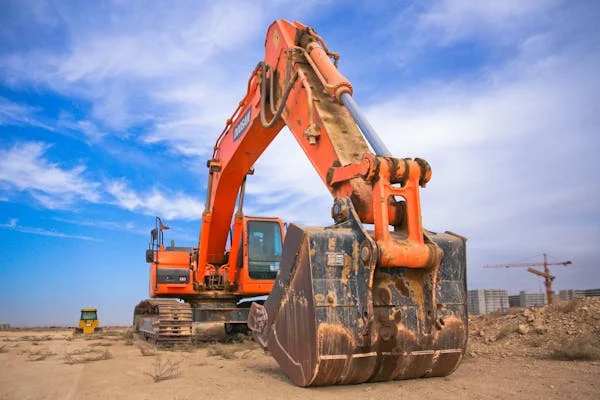Introduction:
At dawn, when the city still slumbers, a symphony begins. It’s not the sound of violins or pianos. It’s the thunderous hum of a machine at a construction site NYT. These colossal beasts, the cranes, bulldozers, and excavators, stir the dormant landscape, transforming it into a canvas for human ambition. Their steel arms, like giants reaching for the sky, orchestrate the dance of progress.
The Mighty Crane: Lifting Dreams Skyward
The crane, with its towering neck and unwavering gaze, is the prima donna of the construction orchestra. It lifts steel beams like matchsticks, placing them delicately atop skeletal structures. Each swing is a balletic movement that is precise and purposeful. As the sun climbs higher, the crane’s shadow stretches across the site, casting hope onto the ground below.
Bulldozers: Earth’s Sculptors
Bulldozers, the sculptors of the earth, rumble through the soil. Their massive blades carve pathways, shaping the land to fit our vision. They push aside rocks and debris, revealing the hidden layers of the ground’s history. They rewrite the story with every pass, turning barren lots into foundations for skyscrapers.
Excavators: Archaeologists of Progress
Excavators, like curious archaeologists, dig deep. Their metal teeth gnaw at the earth, unearthing secrets that have been buried for centuries. They reveal ancient pipes, forgotten tunnels, and remnants of forgotten civilizations. As they work, they ask questions such as: Who walked here before us? What stories lie beneath our feet?
Include Safety Precautions for Construction Workers:
Ensuring the safety of construction workers is paramount. Here are some essential safety precautions that every construction site should follow:
- Personal Protective Equipment (PPE):
- Hard Hats: Construction workers must wear hats to protect their heads from falling objects, debris, and impacts.
- Safety Glasses: Eye protection shields workers from dust, flying particles, and chemical splashes.
- Steel-Toed Boots: Sturdy footwear prevents injuries from heavy objects or sharp materials.
- High-Visibility Vests: Bright vests enhance visibility, especially in low-light conditions.
- Fall Protection:
- Guardrails and Safety Nets: Install guardrails around open edges and safety nets to catch falling workers.
- Harnesses and Lanyards: High-rack workers should wear safety harnesses connected to secure anchor points.
- Scaffolding Safety:
- Regular Inspections: Inspect scaffolding before and during construction to identify weaknesses or defects.
- Stable Base: Ensure scaffolding is on a stable surface and adequately leveled.
- Safe Access: Use ladders or stairs to access scaffolding; avoid climbing cross-braces.
- Electrical Safety:
- Lockout/Tagout Procedures: Properly lock out electrical equipment before maintenance or repairs.
- Ground Fault Circuit Interrupters (GFCIs): Install GFCIs to prevent electrical shocks.
- Keep Cords Away: Avoid tripping hazards by securing electrical cords and keeping them away from water.
- Heavy Machinery and Equipment:
- Training: Properly train operators to handle machinery safely.
- Clear Communication: Use hand signals or radios to communicate with equipment operators.
- Stay Clear: Keep a safe distance from moving equipment
- Excavation and Trench Safety:
- Shoring and Sloping: Properly shore up trenches to prevent cave-ins.
- Inspect Soil Conditions: Check for signs of instability or water accumulation.
- Ladders or Ramps: Provide safe exit points for workers in trenches.
- Material Handling:
- Lifting Techniques: Train workers on proper lifting techniques to prevent strains and sprains.
- Mechanical Aids: Use cranes, forklifts, or hoists for heavy materials.
- Clear Pathways: Keep walkways clear to avoid tripping hazards.
- Fire Safety:
- Fire Extinguishers: Place fire extinguishers at accessible locations.
- Emergency Evacuation Plans: Ensure workers know evacuation routes and assembly points.
- No Smoking Zones: Designate areas away from flammable materials for smoking.
- Tool Safety:
- Regular Inspections: Check tools for damage or wear.
- Proper Storage: Store tools securely to prevent accidents.
- Use Guards: Use guards on power tools to protect against accidental contact.
- Health and Hygiene:
- First Aid Kits: Keep well-stocked first aid kits on-site.
- Hydration: Encourage workers to stay hydrated, especially during hot weather.
- Rest Breaks: Allow regular breaks to prevent fatigue.
Conclusion: A Question for Tomorrow
As the sun sets, the machine at a construction site NYT their engines for cooling. The construction site, once a cacophony of noise, now settles into silence. But the question lingers: What will rise from this orchestrated chaos? A hospital to heal, a school to inspire, or a home to shelter? Perhaps all of the above, each one a testament to the potential of these sites to shape a brighter future.
So, dear reader, listen closely as you pass by a construction site. Hear the whispers of progress, the clank of gears, and the promise of a better future. And ask yourself: What dreams will these machines build next?





